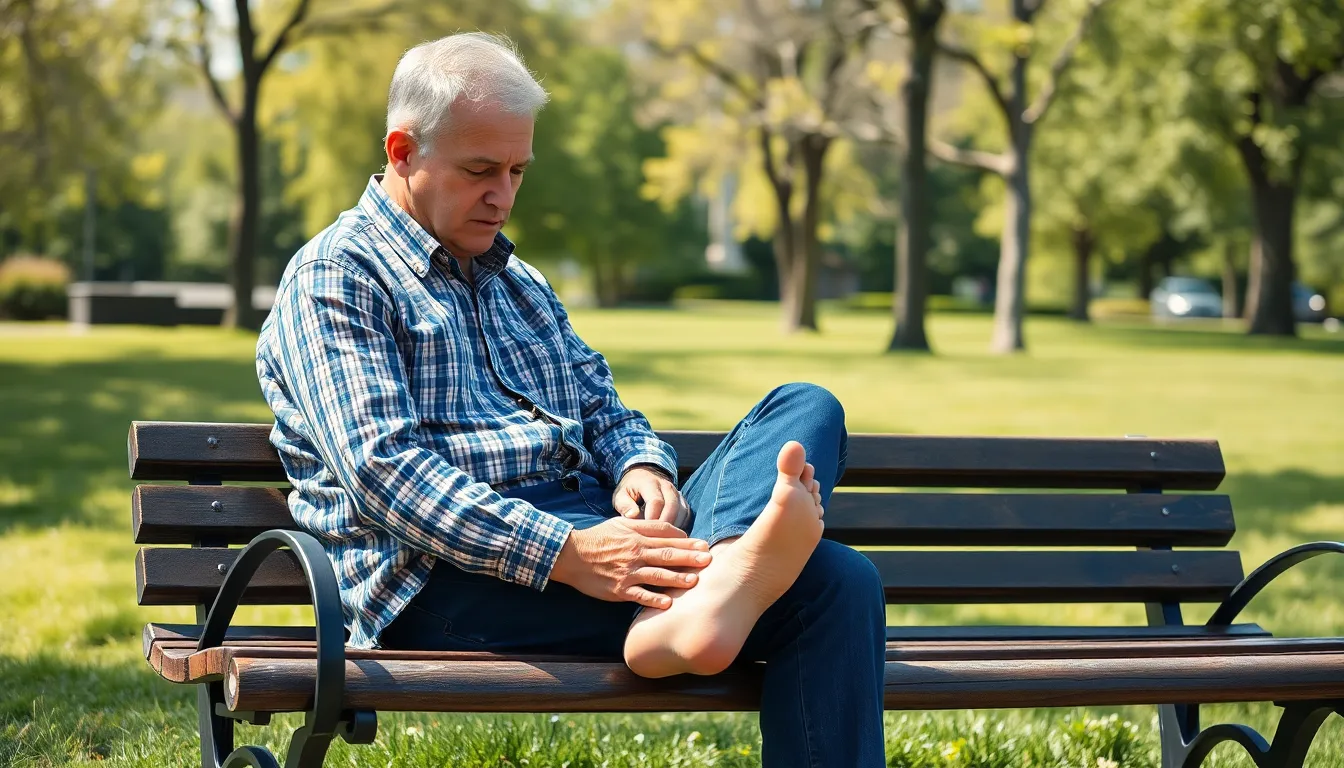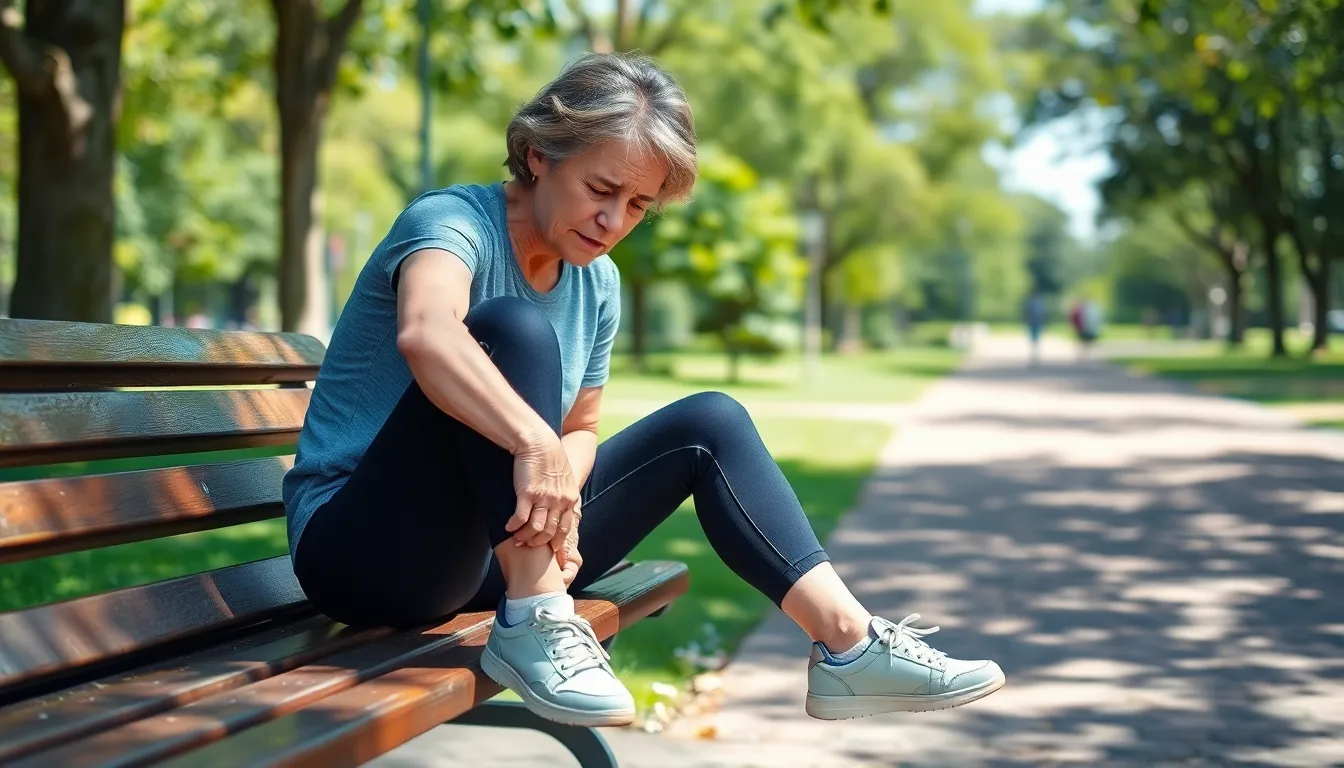Pavatalgia might sound like a fancy dish at a five-star restaurant, but it’s actually a condition that can leave many scratching their heads and their feet. This pesky ailment, characterized by persistent pain in the foot, often brings up an important question: how long can someone live with it? Spoiler alert—it’s not a life sentence, but understanding the ins and outs of pavatalgia is crucial for managing it effectively.
Table of Contents
ToggleUnderstanding Pavatalgia
Pavatalgia refers to ongoing pain in the foot that can disrupt daily activities. Grasping the nuances of this condition is vital for effective treatment and management.
What Is Pavatalgia?
Pavatalgia denotes chronic pain in the foot region, often caused by various factors, including injuries, overuse, or underlying medical conditions. Individuals may experience discomfort in specific areas such as the arch or heel. This condition can manifest at any age, although some individuals may be more susceptible due to lifestyle choices, such as activity level or occupation. Seeking professional advice ensures proper diagnosis and treatment options tailored to individual needs.
Symptoms of Pavatalgia
Common symptoms of pavatalgia include sharp pain, swelling, and tenderness in the foot. Patients often report discomfort during activities like walking or standing. Stiffness may accompany pain, especially after periods of inactivity. Numbness or tingling in the affected area can occur, indicating possible nerve involvement. Severity varies among individuals, with some experiencing mild irritation while others endure significant functional limitations. Recognizing these symptoms aids in timely intervention and management strategies.
Factors Affecting Longevity with Pavatalgia

Several factors influence how long an individual can live with pavatalgia and maintain a good quality of life. Understanding these can lead to better management strategies.
Age and Overall Health
Age plays a significant role in longevity with pavatalgia. Older individuals often experience more pronounced symptoms due to decreased bone density and muscle strength. Chronic health conditions, such as diabetes or arthritis, can complicate recovery and increase pain levels. Younger individuals might handle the condition better, particularly if they maintain an active lifestyle and prioritize their overall health. Nutrition and regular exercise contribute to a stronger support system for those suffering from foot pain. Individual resilience also varies, impacting how each person adapts to living with pavatalgia.
Severity of Condition
The severity of pavatalgia directly impacts longevity and daily function. Mild cases often allow individuals to manage pain with conservative treatments like rest, ice, or over-the-counter pain relievers. In contrast, severe cases may require more intensive measures, including physical therapy, prescription medications, or even surgery. Individuals with debilitating pain face challenges in performing everyday activities. The response to treatment varies between individuals; some may find significant relief, while others see minimal improvement. Effective pain management strategies can enhance quality of life and extend the ability to live comfortably with the condition.
Management and Treatment Options
Managing pavatalgia involves various strategies. These can significantly improve comfort and daily function.
Lifestyle Changes
Engaging in regular low-impact exercises promotes foot health. Maintaining a healthy weight reduces pressure on the feet, decreasing pain levels. Footwear choices matter; supportive shoes with adequate cushioning alleviate stress on painful areas. Stretching routines enhance flexibility and strength, aiding in pain relief. Incorporating breaks during prolonged standing or walking helps avoid aggravation of symptoms. Elevating the feet during rest can also reduce swelling and discomfort. Lastly, experts recommend using ice packs post-activity to minimize inflammation.
Medical Interventions
Consulting a healthcare professional provides tailored treatment plans. Over-the-counter pain relievers, like ibuprofen or acetaminophen, often provide immediate relief. Physical therapy addresses underlying issues and helps improve mobility. Custom orthotics may redistribute weight and alleviate strain on affected areas. In some cases, corticosteroid injections deliver targeted relief for inflammation. When conservative measures fail, surgical options could be explored for chronic conditions. Regular follow-ups with healthcare providers ensure ongoing management of symptoms and adjustments to treatment as necessary.
Prognosis and Life Expectancy
Understanding the prognosis can help individuals manage pavatalgia effectively. This condition affects life expectancy primarily through its impact on mobility and overall health.
General Outlook
The outlook for individuals with pavatalgia varies widely. Age plays a significant role; older adults often experience increased pain due to factors like reduced bone density. Those with good overall health may cope better, while individuals with chronic health conditions may face more challenges. Most mild cases respond well to conservative treatments, allowing individuals to maintain an active lifestyle. Severe cases, however, may necessitate more intensive interventions and ongoing medical support.
Living with Pavatalgia
Living with pavatalgia requires adapting daily activities to manage pain. Individuals are encouraged to engage in low-impact exercises, which can reduce discomfort and maintain mobility. Appropriate footwear can significantly improve daily function, providing essential support. Incorporating rest periods during high-activity times helps mitigate symptoms as well. Regular consultation with healthcare professionals allows for tailored treatment plans to address specific needs effectively. Awareness of symptom triggers enables individuals to better navigate their condition in everyday life.
Living with pavatalgia can be challenging but it doesn’t have to define one’s life. With the right management strategies and support, individuals can lead fulfilling lives despite the discomfort. Understanding personal triggers and maintaining open communication with healthcare providers are key to navigating this condition effectively.
Adapting daily routines through exercise and proper footwear can significantly enhance comfort and mobility. While the journey may vary from person to person, those who prioritize their health and well-being often find ways to thrive. Embracing proactive measures can make all the difference in maintaining a positive outlook and quality of life.




